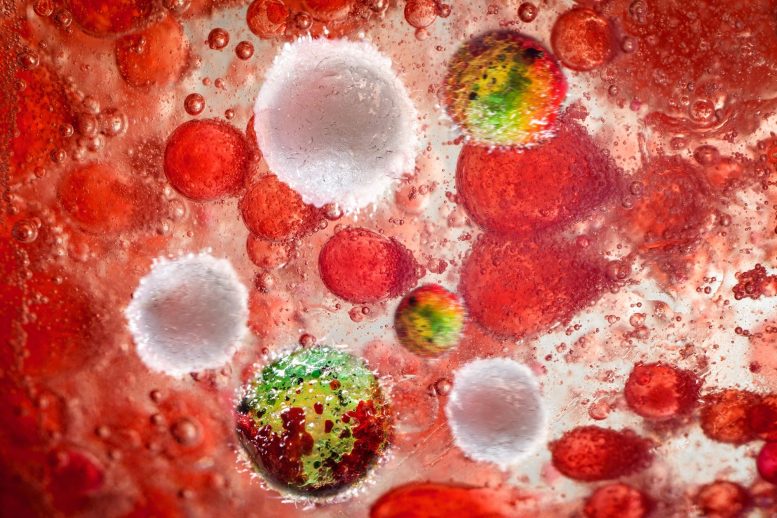By Harvard Medical School, November 20, 2021
- As bacterial infections impervious to drugs rise, so does the need to develop better antibiotics.
As long as antibiotics have existed, so too has antibiotic resistance—the inevitable result as infectious bacteria continually evolve to evade the very drugs designed to kill them.
Today, antibiotic resistance is considered a major global health threat. In the United States, The Centers for Disease Control and Prevention estimates that every year, at least 2.8 million people develop infections resistant to antibiotics, leading to more than 35,000 deaths.
Yet, in recent decades, antibiotic development has been slow, and no new classes of antibiotics have reached the market. Meanwhile, widespread use of the limited number of antibiotics currently available has spurred more bacterial strains to develop resistance, with additional strains already resistant to available antibiotics being discovered, often in hospitals. This situation is expected only to worsen over time, resulting in more drug-resistant bacterial infections and deaths.
Maofu Liao, an associate professor of cell biology in the Blavatnik Institute at Harvard Medical School, spoke with Harvard Medicine News about antibiotic resistance and the challenges of developing new antibiotics.
Liao explained how his team’s research on protein structures in bacteria could inform antibiotic design and described a new pipeline his lab is establishing to improve the process.
In a newly published study in Science, Liao and colleagues demonstrated that their pipeline can effectively identify compounds that interfere with essential proteins in bacteria and thus may have potential as antibiotics.
HMNews: What are some of the most pressing challenges with currently available antibiotics?
Liao: One issue is that most drug development efforts depend on industry, but antibiotics are time-consuming and expensive to develop—and often aren’t necessarily required for treatment and aren’t taken by patients on a regular basis. It’s hard to make the business case to industry that it’s worthwhile to develop new antibiotics when so much effort and money are required, and profit isn’t predictable or immediate.
A second issue is the way we use antibiotics. For a long time, we have relied on single-use antibiotics, or a limited combination of antibiotics. This makes it easy for bacteria to acquire resistance. They can then transfer that capability to other bacteria that have not been exposed to antibiotics. So, we are using very limited tools that bacteria can easily overcome.
Another critical issue is how we develop antibiotics. With few exceptions, our efforts to identify new antibiotics mostly rely on chemical screens against bacterial growth. People do a screen and hope to find some magical compound that can kill the bacteria with great efficacy. Once they have that, they hand the compound to chemists who optimize it and hopefully develop it into a clinically useful antibiotic.
Such screens cannot target specific proteins in bacteria, and may exclude compounds that have the potential to attack crucial bacterial proteins. Moreover, for antibiotics developed through such screens, we often don’t know the underlying mechanism of how they work, or why they stop working when resistance occurs. This is a critical gap in our current approach.
HMNews: What are you studying in the realm of antibiotic resistance?
Liao: I have a longstanding interest in studying how proteins work, so I come into the field on the protein mechanism side. Inside humans, or any living organisms, there are many proteins that do many different things. In bacteria, some of these proteins are doing essential work—so if the proteins get disrupted, the bacteria are not happy and may even die. That’s something we’d like to exploit. First, we want to understand how these essential proteins inside bacteria work and then we want to use this information to direct our effort to kill the bacteria with antibiotics.
HMNews: Can you provide more detail about the bacteria you study?
Liao: Most of our work is on E. coli, which is a model organism related to many pathogenic bacteria. E. coli is a type of Gram-negative bacteria, which means it has an extra membrane in addition to the regular membrane around the cell. That extra outer membrane is vital for keeping the microbe alive. It prevents a lot of things from entering the cell, including antibiotics, and plays a key role in antibiotic resistance. The outer membrane is made of lipids, but many of these lipid molecules are attached to long chains of polysaccharides, or sugars—so the membrane looks hairy, but those hairs are actually sugar chains.
These are large, strange lipid molecules called lipopolysaccharides that have to be synthesized inside the cell and then transported to the outer membrane where they are assembled. We are studying the proteins involved in transporting these lipids from inside the cell to the outer surface. The proteins involved in the transport process are essential for E. coli survival and growth. If we can somehow interfere with the function of these transport proteins, we may affect bacterial growth and survival.
HMNews: You are using a technique called Cryo-EM in your research. What are the benefits of this technique?
Liao: Cryo-EM is a microscopy technique used in structural biology, which is a field that aims to see small things in high resolution. Traditional structural biology relied on methods like X-ray crystallography to obtain high-resolution details of protein structure. However, with X-ray crystallography you have to put your protein in crystal contact instead of in solution, which makes it difficult to observe all the different conformations, or shapes, of the protein—only some of which may be relevant. Cryo-EM is more flexible because it doesn’t require crystal contact.
You freeze your protein sample in ice, put it into the microscope, and take many, many images. Those images can be put together and processed to obtain high-resolution structures of the protein in its different conformations. This method helps us obtain critical insights into how transporter proteins in E. coli work. We are able to look at the entire protein–lipid complex in high resolution to see how the protein interacts with its lipid substrate in a lot of detail.
HMNews: How can insights from cryo-EM improve antibiotic development?
Liao: We are trying to build an entirely new pipeline for antibiotic development. The pipeline starts with a chemical screen to find a compound that can stop the activity of essential proteins in bacteria. Once we have that, we use cryo-EM to obtain the high-resolution structure of the target protein bound to the compound. Then we know which pocket the compound binds on the protein and we gain high-resolution information about the binding pocket. We use the structural information about that so-called druggable pocket to do a virtual screen, potentially using artificial intelligence, to find other compounds with other chemical backbones—or scaffolds—that bind to the same pocket on the protein.
So, we ask the question: What other compounds with other scaffolds can take advantage of this pocket that worked for the first compound? Next, we use cryo-EM to determine the structure of the protein bound to any new compound that was identified, and confirm the compound’s effect on protein activity and bacterial growth. We do that so we can validate our prediction and get more detailed information about how every part of the new compound interacts with the pocket; which parts are more important, which parts are less important.
We also get information about the potential variations of the druggable pocket when the protein is bound to the new compound, so we can better understand the interplay between the protein and compound. This gives us a rational way to further optimize the compound as it is developed into an antibiotic. In our recent paper in Science, we successfully used this pipeline to identify a completely different compound that had the same effect on an essential transporter protein as our starting compound.
HMNews: What is the long-term goal for your pipeline?
Liao: We are still doing the initial work to demonstrate the power of our pipeline, but as we focus on these essential transporter proteins, we hope this information can be used to develop better antibiotics. During our research, we realized that knowing the mechanism of a compound and having high-resolution information about how the compound interacts with a target protein really breaks open many possibilities of antibiotic drug development. It allows us to use more rational approaches to develop antibiotics efficiently.
Our goal is to change the way we develop antibiotics. We would like to show that new ideas and new technologies can transform antibiotic discovery into a more systematic, rational, and robust process.
I hope that in the future, by changing the way we develop antibiotics, humans can eventually win the race of antibiotic resistance. I think we should develop a wide range of broad-spectrum and narrow-spectrum antibiotics: We should have multiple drugs to target multiple proteins inside bacteria and we should have multiple drugs to target the same essential protein through different mechanisms, such as different drug pockets.
If we have a large array of useful antibiotics, bacteria should not be able to develop resistance so easily. Plus, then we can combine different antibiotics for different patients based on their particular disease and infection conditions to get the best results. First, we need the tools, then we can have clever ways to use them. But if we don’t have the tools in hand, there’s really nothing we can do.
Reference: “Distinct allosteric mechanisms of first-generation MsbA inhibitors” by François A. Thélot, Wenyi Zhang, KangKang Song, Chen Xu, Jing Huang and Maofu Liao, 23 September 2021, Science.
DOI: 10.1126/science.abi9009





